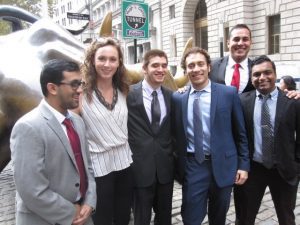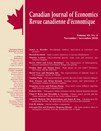Abstract: When we classify factors of production by their tradability, the relative wage of nontraded labour influences the real exchange rate through the relative cost of distribution services. We confirm this prediction using monthly data on the sector-level US–Canada real exchange rate and the relative wage of service-producing labour. The relative wage accounts for 40% of the variability of the real exchange rate at a one-month horizon. Furthermore, when we use the effective nontraded labour content to classify goods into nontraded and traded ones, the variability of the price of the nontraded-goods basket accounts for more than half of the variability of the real exchange rate.
 Professor Kanda Naknoi presented her work at the UC Irvine Macroeconomics Seminar on May 17. The title of her presentation was “Why Are Exchange Rates So Smooth? A Household Finance Explanation”.
Professor Kanda Naknoi presented her work at the UC Irvine Macroeconomics Seminar on May 17. The title of her presentation was “Why Are Exchange Rates So Smooth? A Household Finance Explanation”.



